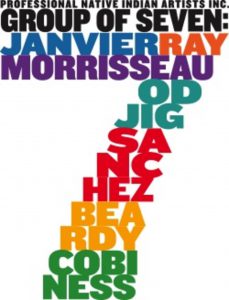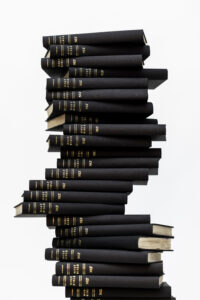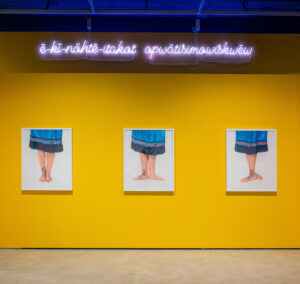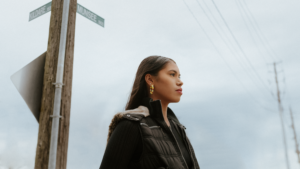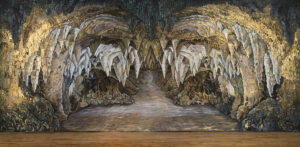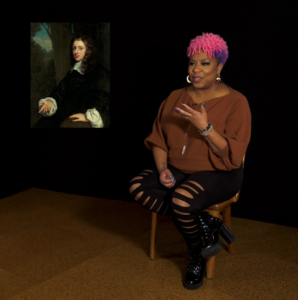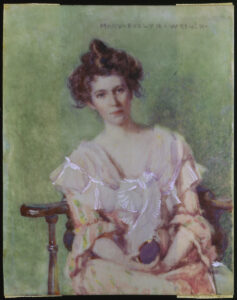Art Windsor-Essex respectfully acknowledges that we are located on Anishinaabe Territory – the traditional territory of the Three Fires Confederacy of First Nations, comprised of the Ojibway, the Odawa, and the Potawatomi. Today the Anishinaabe of the Three Fires Confederacy are represented by Bkejwanong. We want to state our respect for the ancestral and ongoing authority of Walpole Island First Nation over its Territory.
- Home
- Exhibitions + Displays
- 7: Professional Native Indian Artists Inc
7: Professional Native Indian Artists Inc
October 3, 2015 - January 17, 2016
AWE Gallery
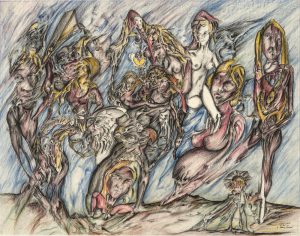
7: Professional Native Indian Artists Inc. offers diverse audiences from the many nations across Canada an unparalleled opportunity to appreciate and engage with the work by one of Canada’s most important early artist alliances—the Professional Native Indian Artists Incorporated (PNIAI).
This Group of Seven was a ground-breaking cultural and political entity that self-organized to demand recognition as professional, contemporary artists, to challenge old constructs, and to stimulate a new way of thinking about contemporary First Nations people, their lives and art. Gathering informally at first in the early 1970s, Jackson Beardy (1944-1984), Eddy Cobiness (1933-1996), Alex Janvier (b. 1935), Norval Morrisseau (1932-2007), Daphne Odjig (b. 1919), Carl Ray (1942-1978) and Joseph Sanchez (b. 1948) formed this influential and historical group. Since their formation, the PNIAI have often been wryly referred to as the “Indian Group of Seven.”
Drawing on both private and public collections the exhibition brings together 83 works including those featured in formative exhibitions of the Group along with a number of recently uncovered masterworks of the period that have not been publicly accessible for quite some time. Significant works by each member are showcased demonstrating their distinctive styles and experimentations. The selection serves to challenge the myth that PNIAI members participated in a unified “Woodland style,” as well, to substantiate the avant-gardism of the Group. The exhibition seeks to honour their efforts and recognize the contributions of these seven artists to the history of First Nations aesthetic production and to the history of art on Turtle Island.
Narratives collected from members of the group and their contemporaries will further inform the exhibition through didactic materials, catalogue text and audiovisual materials. While the exhibit both records and celebrates this history, the exhibition will also investigate this rich legacy and demonstrate how their impact continues to resonate in relation to Aboriginal and non-Aboriginal contemporary art practices.
About the Professional Native Indian Artists Incorporated
Officially incorporated on April 1, 1975, the seven artists of the PNIAI came together in order to collectively fight for the inclusion of their work within the Canadian mainstream and the contemporary art canon. Situated within a contentious political context, including the Liberal government’s controversial Indian policy of 1969, the PNIAI were resistant to colonial discourses and broke with identity definitions and boundaries imposed on First Nations. The PNIAI were pivotal in bringing political issues to the forefront of contemporary art practices and theory. Their work directly addressed issues of colonization, and the exclusion, marginalization and denial of historical and contemporary realities that First Nations people encounter daily. Their efforts, in addition to the strength of each individual’s work, influenced individual practices and collective strategies nationally. By fearlessly portraying the reality of Canada from an Indigenous perspective, they expanded the vocabulary of contemporary visual art practice and set a new standard for the artists who followed in their wake. Disenchanted with the Department of Indian Affairs and Northern Development’s marketing and promotion strategies, they fought against exclusionary practices that often forced First Nations artists into artistic avenues that were restrictive and marginalizing. These artists were among the first to fight to establish a long-overdue forum for the voices and perspectives of First Nations artists. In many ways, the forward thinking of these pivotal artists led to the development and acceptance of an Indigenous art discourse and the recognition of First Nations artists as a vital part of Canada’s past, present and future identity.
Purchase the 360-page hardcover catalogue that has been published to accompany the exhibition by the MacKenzie Art Gallery. It features texts by eight writers, including the curator, Michelle LaVallee, along with numerous large, colour reproductions of works in the exhibition. Available at AGW Visitor Services, $55.
7: Professional Native Indian Artists Inc.is organized by the MacKenzie Art Gallery and curated by Michelle LaVallee. This project has been made possible through a contribution from the Museums Assistance Program, Department of Canadian Heritage. The MacKenzie Art Gallery receives ongoing support from the Canada Council for the Arts, the Saskatchewan Arts Board, SaskCulture, the City of Regina and the University of Regina.
Presentation in Windsor with the support of Canada Steamship Lines
Media
